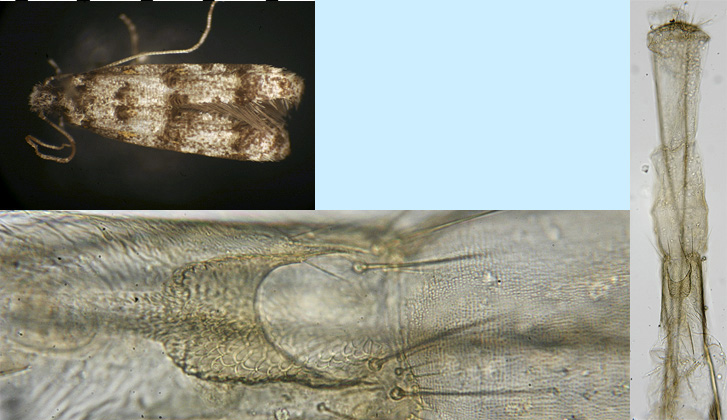
Homosetia species are small, narrow-winged tineids that often have raised tufts of scales on the forewing. In this regard, some Homosetia can superficially resemble various gelechioid moths that have tufted forewings, e.g., Mompha (Momphidae), Coleotechnites (Gelechiidae), and some Chrysopeleiinae (Cosmopterigidae). Homosetia, however, are easily distinguished from all gelechioids by their having a prominent "shaggy" (not shiny) tuft of erect hairlike scales on the head (the tuft usually is retained in all but the most worn individuals), whereas the heads of gelechioid moths are "smoothly scaled" (i.e., covered in broad, closely-appressed scales that give the head a smooth, shiny appearance). Homosetia are also typical of Tineidae in having long, folded maxillary palpi, which never are seen in Gelechioidea.
At least ten species of Homosetia occur in the Midwest; quite a few of these species are undescribed. Some are fairly distinctive in appearance, but there is also an assemblage (the monophyly, or lack thereof, of which presently is not known) of externally-similar species, all of which have gray forewings with small patches of dark-yellow scaling and blackish tufts (some of which may be paired) of raised scales at about one fifth, one half, and four fifths of the wing length from the base, respectively, with some or all of the tufts lying within a diffuse dark fascia that extends the entire breadth of the forewing. All of these forewing tufts appear to be readily sloughed off with wear and may be indiscernible in some specimens. At our present state of knowledge, reliable sight identification of the moths of this color group probably is impossible. The various species of this color group are, however, markedly different on genital morphology, as can be seen in the figures presented here. The first seven moths covered below belong to this group.
All specimens shown here were collected as adults at light (UV unless otherwise noted). In all images of isolated valvae, the left valve is shown in lateral aspect, with its apex (posterior end) oriented to the right.

Homosetia undescribed species 1; collected Shannon County, Missouri, 4 July, 1993. NOTE: in this prep, the corpus and ductus were accidentally separated and could not be retrieved.
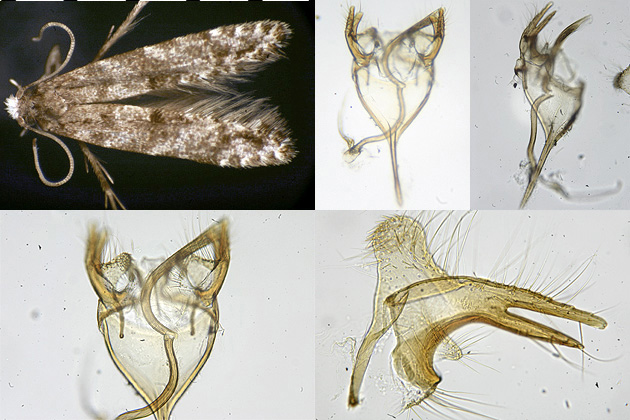
Homosetia undescribed species 2; collected Coles County, Illinois, 22 May, 1993. In this preparation, the aedeagus, which when intact describes a single continuous curve, was accidentally broken at about midlength.
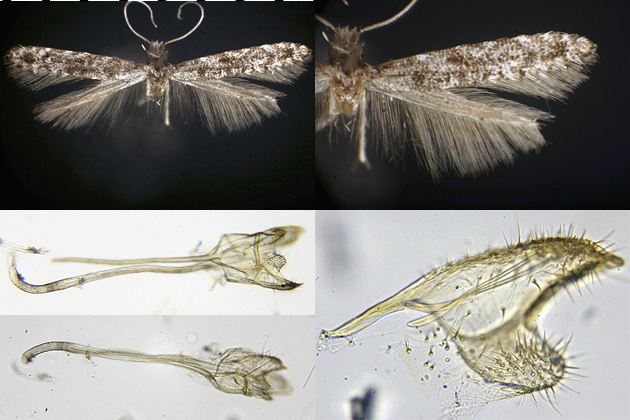
Homosetia tricingulatella; collected Washington County, Arkansas, 3 June, 1995.
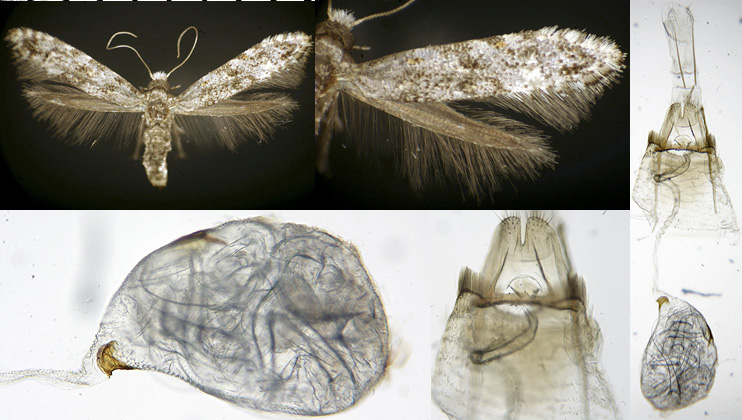
Homosetia undescribed species 3; collected Parke County, Indiana, 28 August, 1997.

Homosetia undescribed species 4; collected Coles County, Illinois, 6 July 1996.

Homosetia undescribed species 5; collected Coles County, Illinois, 19 July, 1997.
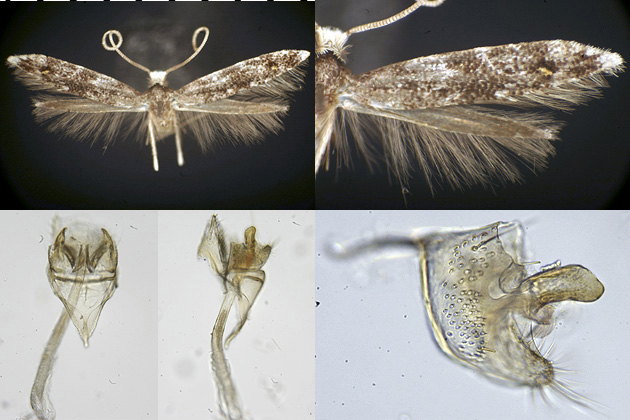
Homosetia undescribed species 6; collected Coles County, Illinois, 20 May, 1995.
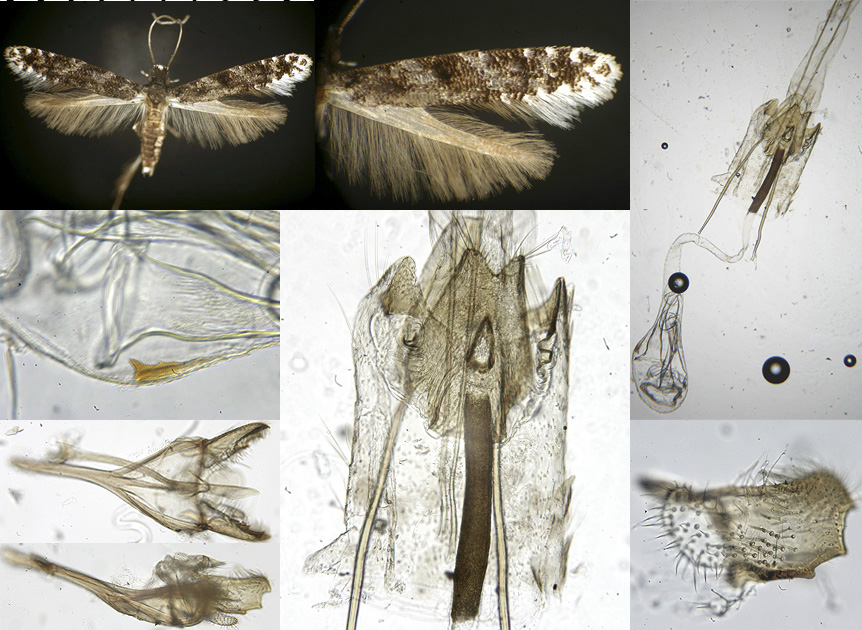
Homosetia bifasciella; male (moth and genitalia illustrated) collected Coles County, Illinois, 27 July, 1995; female collected Coles County, Illinois, 31 July, 1995 (incandescent light).
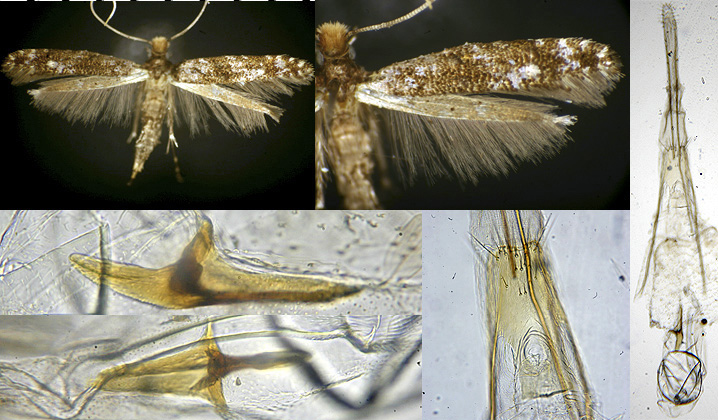
Homosetia undescribed species 7; collected Coles County, Illinois, 12 August, 1995. The panels in the lower left-hand corner of this image show the signum (which is single) in two different aspects.
THE FORMER "UNDESCRIBED SPECIES #8" IS STENOPTINEA AURIFERELLA. ACCORDINGLY, IT HAS BEEN MOVED TO THE PAGE THAT IS BEING DEVELOPED FOR THAT GENUS.
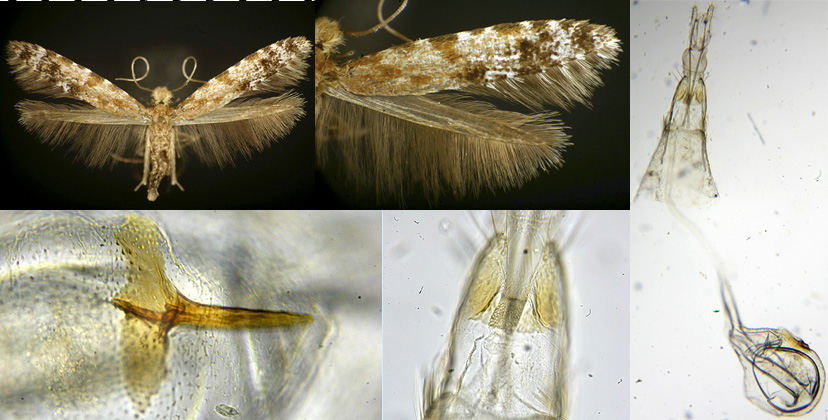
Homosetia costisignella; collected Coles County, Illinois, 10 June, 1996.
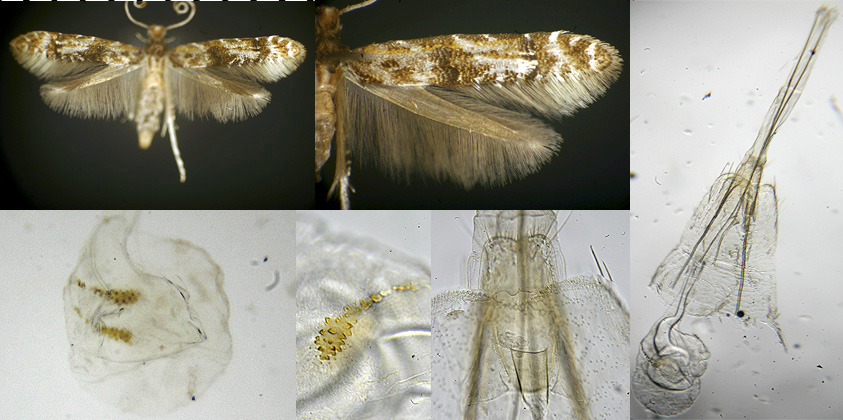
Homosetia fasciella; collected Coles County, Illinois, 25 September, 1995.